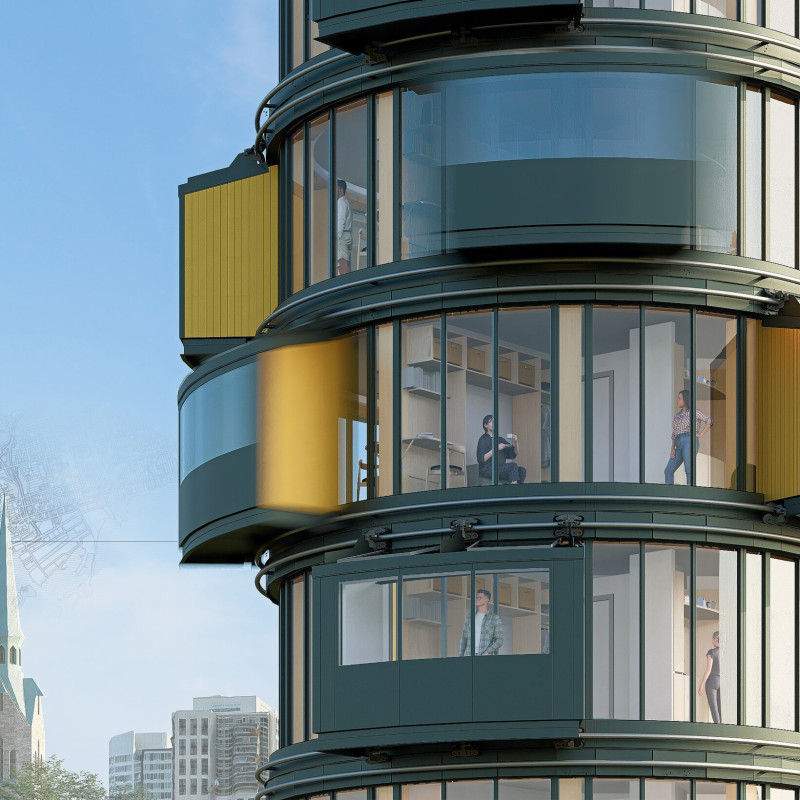5 key facts about this project
At first glance, the structure's form presents a dynamic silhouette that interacts harmoniously with its surroundings. The layout strategically addresses the environmental conditions of its location, optimizing natural light and ventilation throughout the interiors. This consideration of the site contributes significantly to the energy efficiency of the building, reducing reliance on artificial heating and cooling systems. The orientation of the project not only maximizes the views of the landscape but also plays a crucial role in establishing a relationship between the indoors and outdoors.
The architectural design integrates a palette of materials that speak to both durability and visual appeal. Key materials include natural stone, glass, and sustainably sourced timber, each chosen for their ability to resonate with the surrounding environment. The use of natural stone provides a sense of permanence while the glass elements evoke transparency and openness. Timber features prominently, introducing warmth and texture to the overall composition, highlighting the project's commitment to organic materials.
An exploration of the architectural plans reveals a well-considered spatial organization. The project incorporates multifunctional spaces that respond to the diverse needs of its occupants. For instance, the main living areas are designed to accommodate both social interaction and private retreat, fostering a duality of use that enhances livability. Transitions between spaces are carefully crafted to ensure fluid movement, with the flow of circulation supporting an intuitive experience within the structure.
Architectural sections of the project expose the thoughtful layering of spaces, illustrating how vertical elements, such as stairs and mezzanines, contribute to a sense of openness without compromising intimacy. This verticality not only adds depth to the design but also allows for strategic placement of windows that bring in natural light from multiple angles. This design choice significantly enhances the ambiance of each space, encouraging a closer connection to the external environment.
An important aspect of this architectural project is its commitment to embracing modern technology while respecting timeless design principles. Smart home features are subtly integrated, improving the functionality of the living spaces while maintaining an unobtrusive presence. This blend of technology and traditional craft signifies a forward-thinking approach that prioritizes user comfort and convenience.
Unique design approaches evident in this project include the incorporation of biophilic design elements, such as green roofs and living walls, which not only enhance the building’s aesthetic but also contribute to biodiversity. These features enable occupants to engage with nature, providing a serene atmosphere that complements the overall design intent. Moreover, clever use of shading devices further optimizes energy efficiency, showcasing a proactive stance on sustainability.
Overall, the project succeeds in creating an architectural identity that is both modern and respectful of its context. Each detail, from the choice of materials to the spatial organization, reflects a deliberate decision-making process that celebrates craftsmanship while addressing contemporary needs. For those interested in delving deeper into this architectural project, it is beneficial to explore the various architectural plans, sections, and designs that illustrate the thoughtful execution of ideas. The project's presentation offers further insights into its unique architectural vision, allowing for a comprehensive understanding of how each element was carefully tailored to achieve an exemplary synthesis of form and function.


























